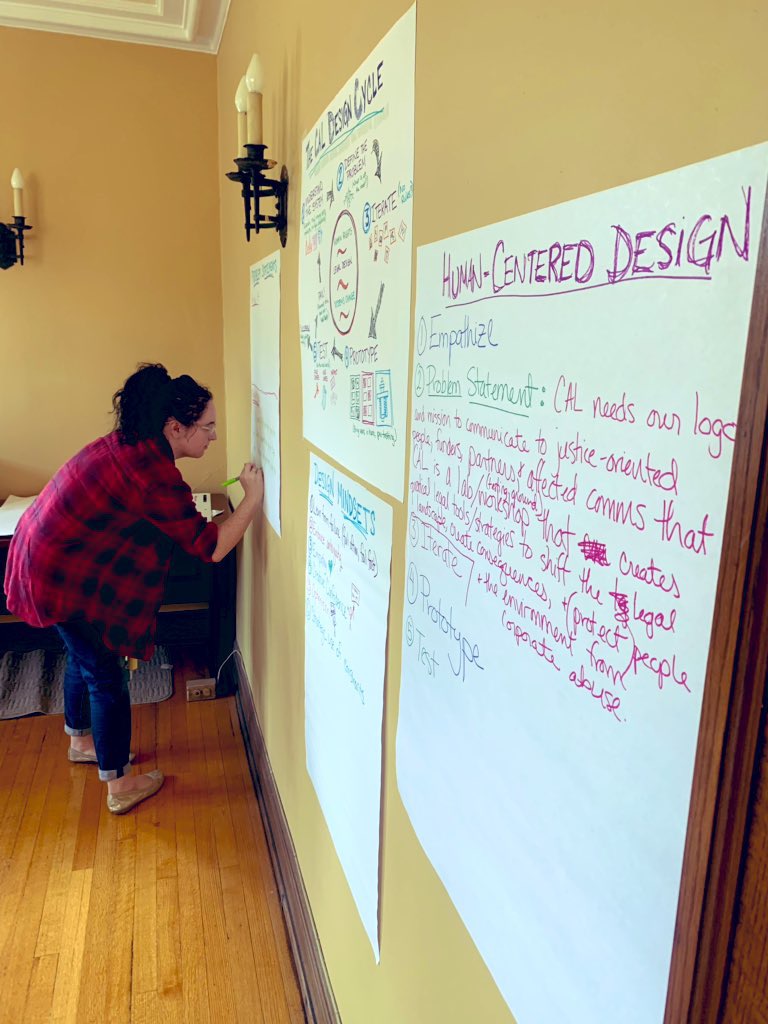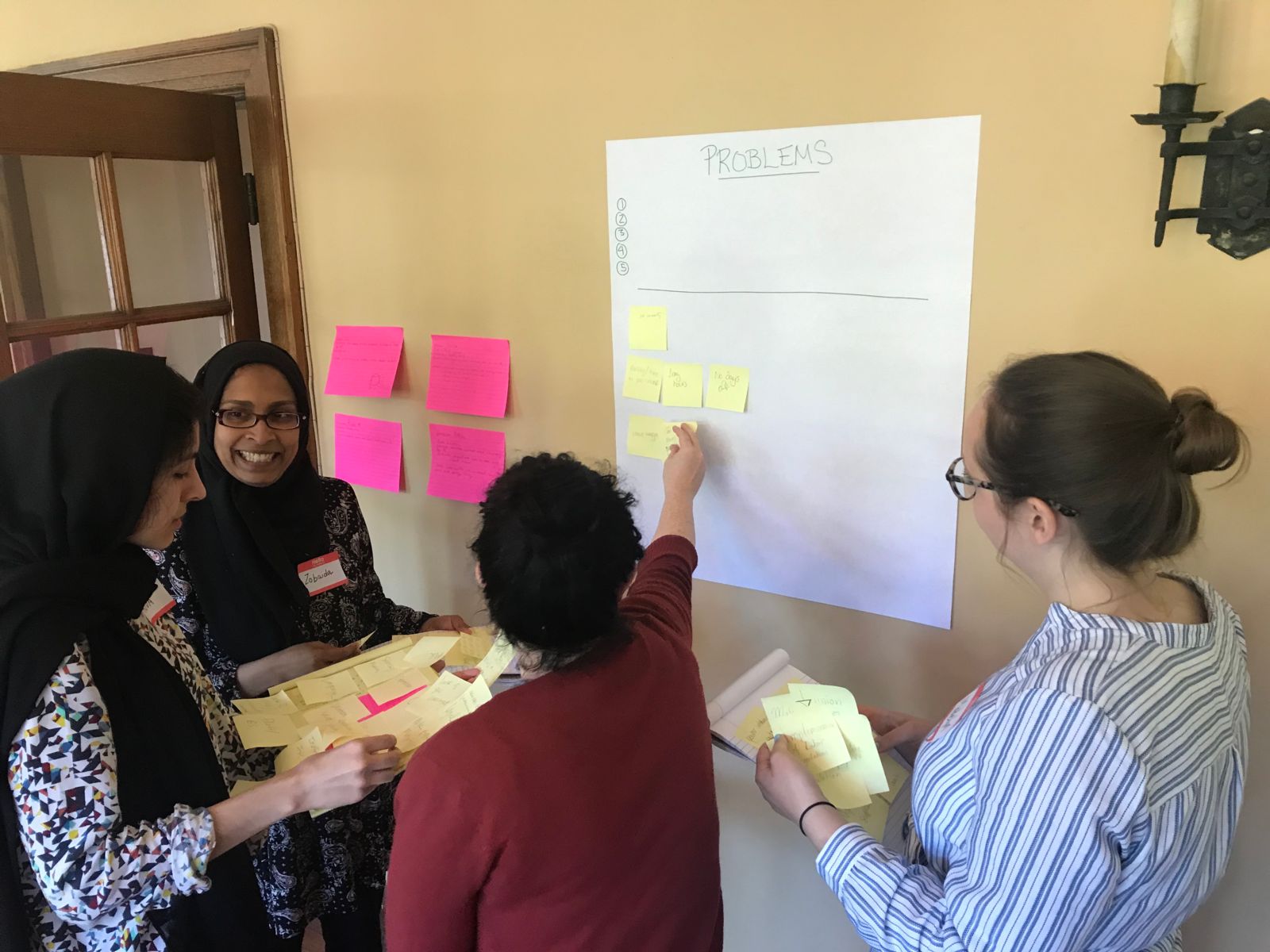There is near-consensus among human rights practitioners that the field faces, if not a crisis, a daunting array of complex challenges. For the majority of the world that lacks significant economic and political power, there is an urgent need to diversify our tools and increase our capacity to innovate as quickly as the powerful do. To meet this need, some human rights advocates have embraced design thinking and the innovation lab model as a way to shake free of old patterns and identify promising, if sometimes crazy, ideas.
Human rights labs include nonprofits like JustLabs, and my own organization, Corporate Accountability Lab. While labs are ubiquitous in the private sector, the model draws heavily from social movement practices. Many major companies now boast in-house labs for product innovation and even social impact. Based on the assumption that design thinking is a creature of the private sector, one critique of “social labs” is that they run against Audre Lorde’s famous warning that “the master’s tools will never dismantle the master’s house.” But spaces that support innovation and collaboration are not, in fact, the master’s tools, even if the master has picked them up. They are the movement’s tools. Resource-strapped organizations and communities do innovate—and have done so in impressive and world-changing ways throughout history.
The lab model is exercised in many different ways in different contexts, but at their best, labs reclaim some of the beauty and spontaneity of effective collective action. They are collaborative, bringing in diverse actors across disciplines, experiences, and geographies. The workflow is designed to unite regions of the brain responsible for both rational and creative thinking, integrating visual art, music and other forms of expression. They are fun, allowing participants to leverage play to spark original thinking. And they view everyone as a whole person rather than measuring her against her job description, identity, or other pre-defined role.
The mechanics are diverse, but most labs engaged in human-centered design follow a design process similar to that promoted by the Stanford d.school: (1) empathize with the “user” (in our case, often, but not always, the rights holder); (2) define the problem; (3) ideate; (4) prototype; (5) test. A misconception about this process is that it results in brilliant ideas to solve complex problems in a one- or two- day sprint.

(Photo courtesy of Corporate Accountability Lab)
At Corporate Accountability Lab, we adapted this process to a human rights law environment. We found that a careful systems analysis at the outset is essential to selecting a user that has the power to solve the problem, and a problem that can be solved by that user. This often requires supply chain mapping, legal research, stakeholder maps, and a detailed understanding of power dynamics between the relevant actors.
But ignoring our systems analysis for the sake of adherence to the mainstream version of design process has led us astray. Last year, we hosted a Bangladeshi labor lawyer, an Iranian American fashion designer, human rights attorneys, and law student interns for a design sprint focused on innovating solutions to the persistent abuse of worker rights in the Bangladeshi garment sector. The group defined the user as a worker, and the problem as “How might a person working in a garment factory in Bangladesh create a safe, compliant workplace, because the status quo is dangerous to her health and safety?” Despite misgivings about this framing, we pushed forward. In the early stages, every small group identified the solution as worker organizing—one of the few points of leverage directly available to the identified user.
The problem statement, by being overbroad and identifying a user that was not in the room, drove us all to a single answer—worker organizing—failing to account for other forms of leverage available to our participants but inaccessible to a lone worker (putting public pressure on multi-stakeholder Initiatives, litigating against buyers or social auditors, or developing and advocating around improved model contracts).

(Photo courtesy of Corporate Accountability Lab)
As we debriefed this activity, we saw several ways we could have reframed the design process to create a more appropriate container for innovation. Our prior analysis had shown that a driver of poor labor conditions was the low contract price buyers paid to supplier companies. Based on this conclusion, a better problem definition might have been: “How might civil society and worker organizations incentivize companies to pay a contract price that would allow supplier companies to comply with (1) the commercial terms and (2) the labor terms of their supplier agreements?” This is a narrower question where we, as a civil society organization, would have a potential role in the solution.
Our most successful design processes have centered around smaller problems arising from our desk and field research. By putting these problems through a structured design cycle, we have turned numerous failures into successes, but also identified early where an obstacle might be insurmountable, leading us to redirect our resources.
The Lab model also offers the human rights community a move away from some of the more problematic private sector practices—that many of our organizations have adopted and that have led to “a culture of unwellness”—and back toward a supportive, diverse, thriving movement space. Too many human rights nonprofits operate like traditional corporate offices on a casual Friday. We should be challenging not just the harmful impacts of human rights violators, but also their culture of control and repressive power dynamics. Strict hierarchies, restrictive policies, short deadlines, and critical managers are obviously contrary to creativity. Whether we are in the private or public sector, global North or global South, these workplace dynamics are unsustainable and undermine our ability to innovate.
The design process, in contrast, allows full participation regardless of knowledge and is an efficient way to dive deep on an issue with which you were previously unfamiliar. It is no coincidence that many academic institutions have embraced design thinking—designers are first and foremost learners, approaching each new task with openness and curiosity. Lab processes are naturally pedagogical and can be used to good effect in many learning environments.
For students, this can be liberating and equalizing. However, there remains a tension between how certain fields (law perhaps most egregiously) are taught and the risk-embracing openness of design thinking. To thrive in a lab environment, practitioners must be able to set aside their substantive training and reconnect with the part of themselves that drew dragons in middle school notebooks and built igloos out of handmade bricks of snow. Having training in hard skills is certainly relevant but must be viewed as what you do, rather than who you are.
Finally, labs are meant to have an impact. Too often, “lab spaces” are created for a day or a few hours, and participants leave without any tangible results. In this way, the lab becomes an academic space only, and fails to improve lives. While impacts can be hard to measure, particularly where the lab is geared toward systemic change, human rights advocates engaged in lab processes must remember that the design process is merely another tool to achieve our goals. If the process does not result in real world impact, we should throw it away and design something new.
This series was developed in partnership with the University of Dayton Human Rights Center as part of the 2019 Social Practice of Human Rights Conference. To read more, visit our partnership page.

